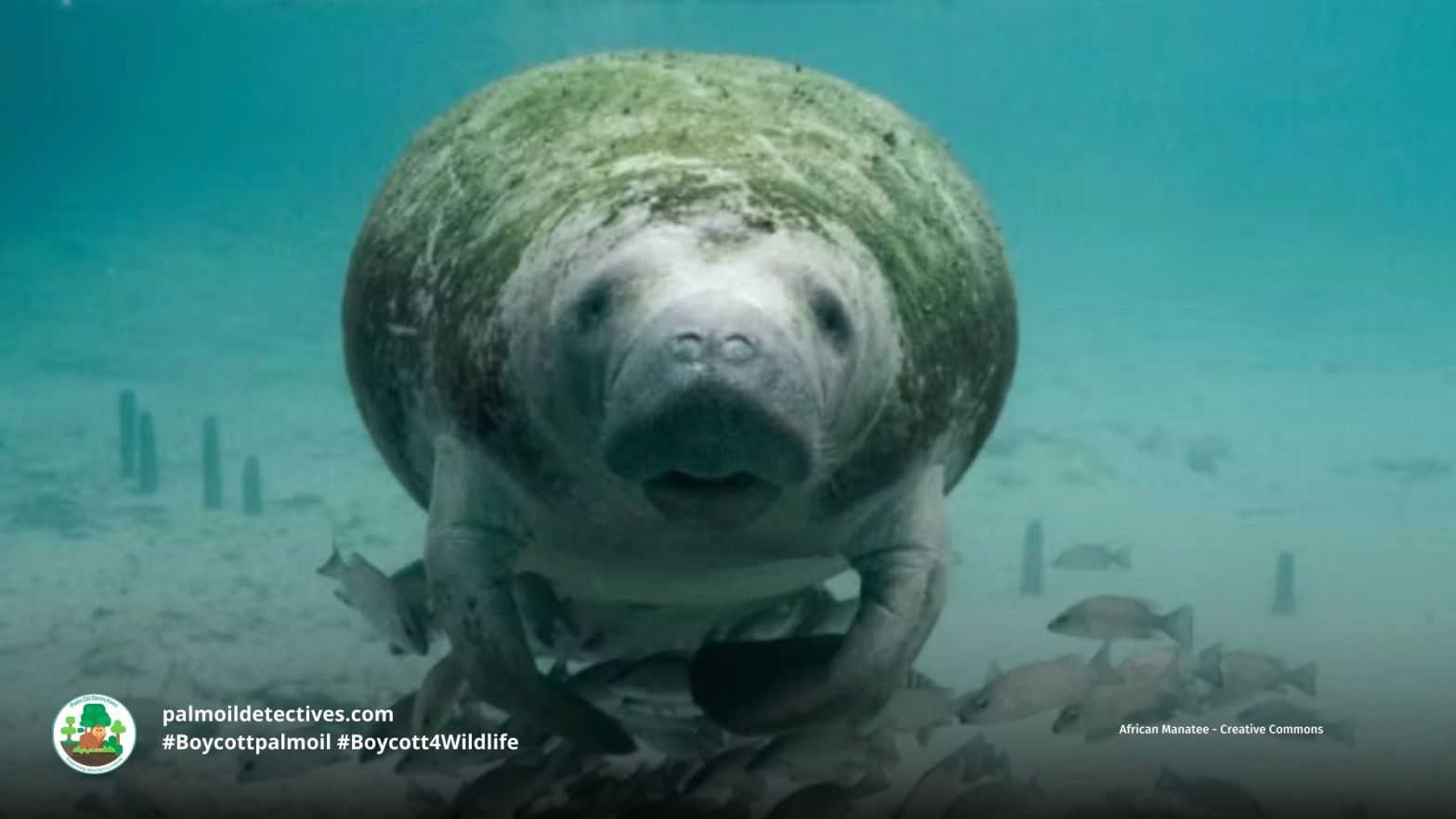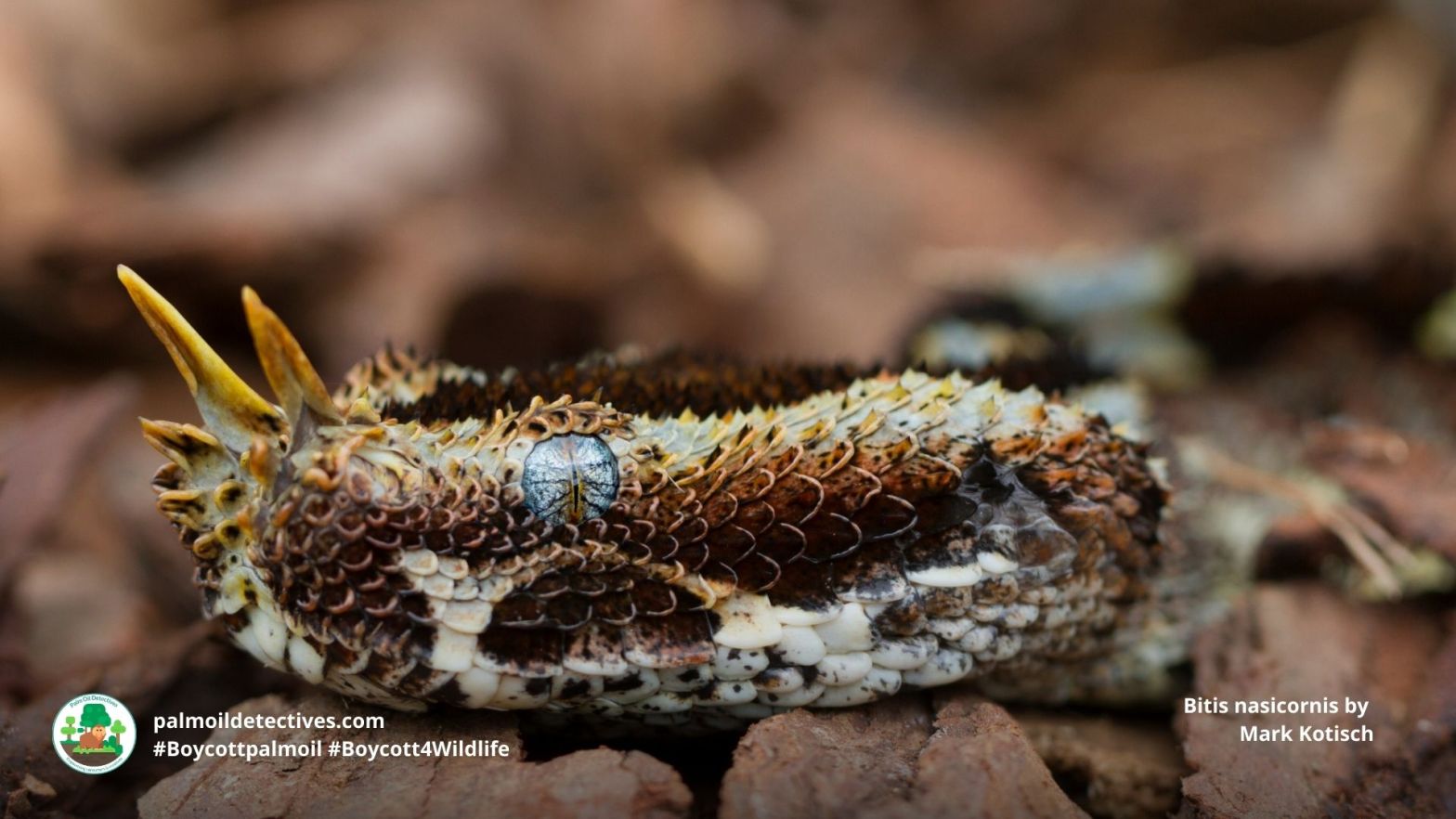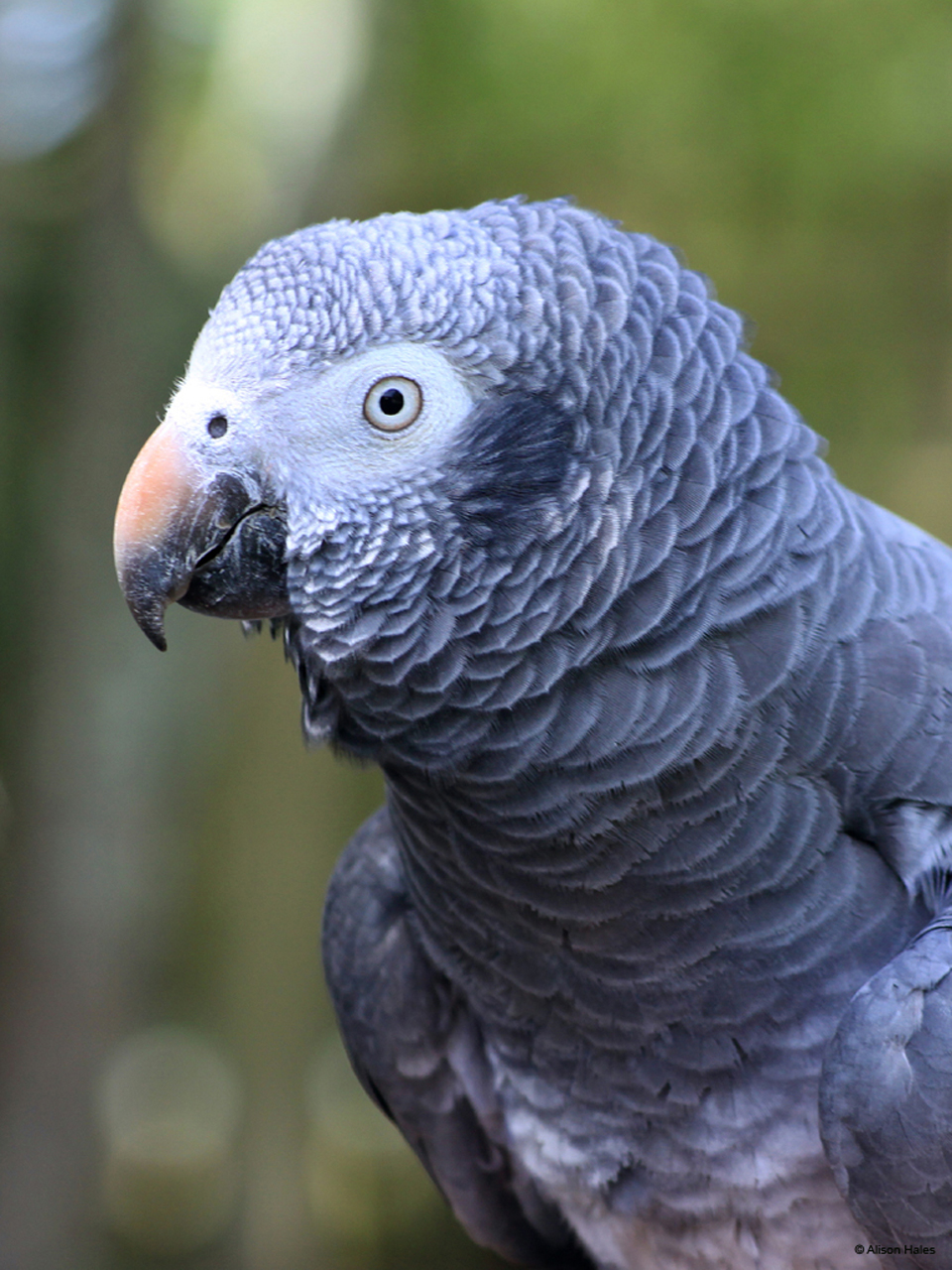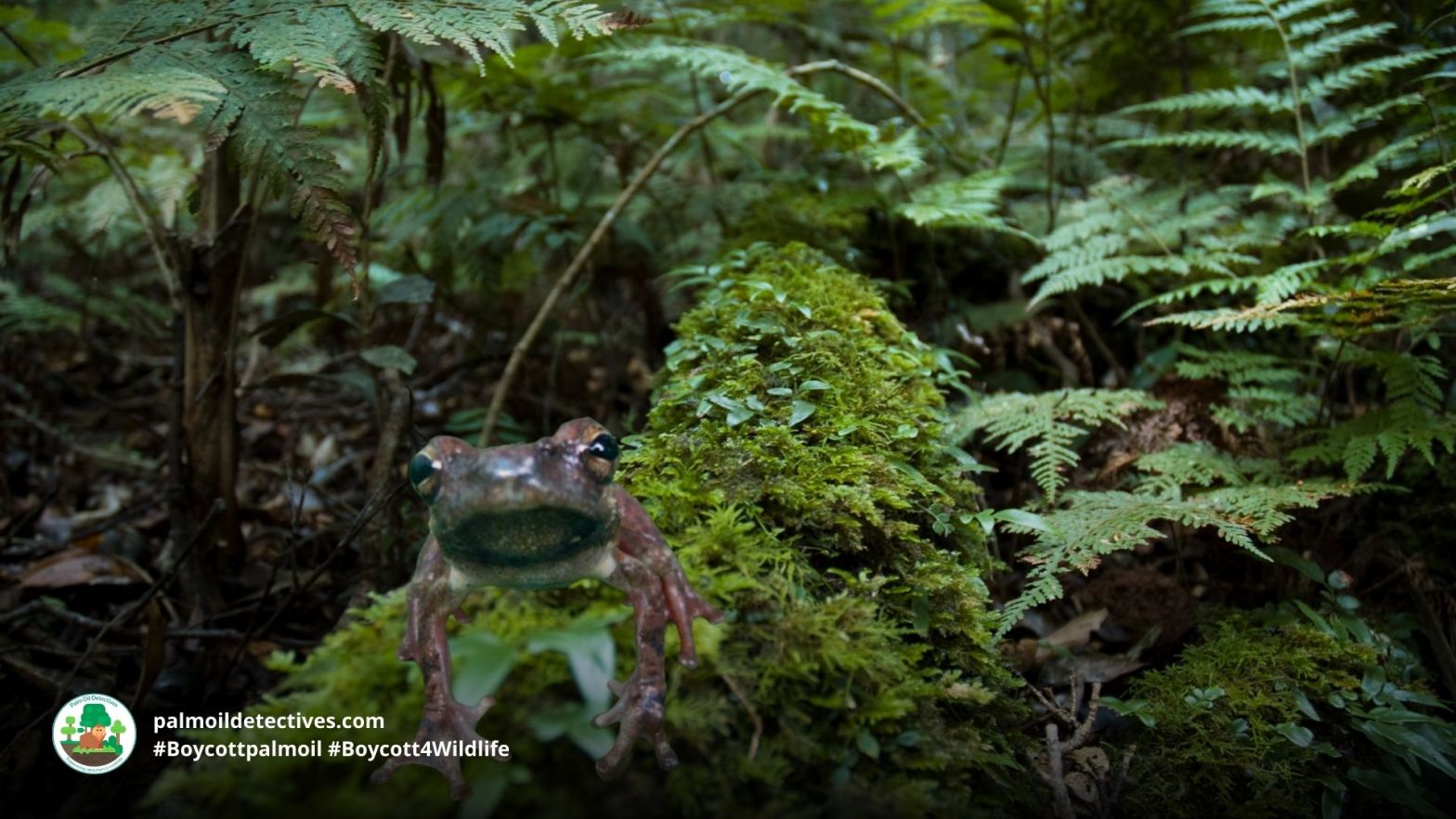Inquisitive and highly social Campbell’s Mona Monkeys are known for their intense hazel eyes and bright yellow brows. They use their large puffy cheeks to store food while they climb to the top of tree canopies to eat it. Males will engage in a dawn and dusk symphony of calling along with other species in a coordinated ritual. They are Near Threatened due to hunting and extensive forest loss throughout their range in West Africa for palm oil, coffee, cocoa and mining. Help them every time you shop by using your wallet as a weapon – #Boycottpalmoil #Boycott4Wildlife
Tag Archives: Liberia
African Manatee Trichechus senegalensis
In the folklore of West Africa, there’s a fascinating character called Maame Water, believed to be a goddess of the sea, she symbolises wealth and beauty. Maame Water is none other than the African Manatee!
The Serer people of Senegal, the Gambia, and Mauritania hold the African Manatee in high regard, considering them sacred and a guardian of the secrets of the future according to their creation myth. This precious species is vulnerable from palm oil deforestation, hunting and pollution. They perform an essential service to mangrove ecosystems by keeping them healthy. Help them survive and #Boycottpalmoil #Boycott4Wildlife every time you shop!
Yellow-casqued Hornbill Ceratogymna elata
The yellow-casqued hornbill is one of the largest birds in the rainforests of West Africa weighing up to two kilos. They prefer to live high up in the rainforest canopy in Côte d’Ivoire, Ghana, Liberia, Mali and Sierra Leone. Their main threat is hunting and human persecution and they are possibly extinction now in some countries. Recent mass deforestation for mining, palm oil, cocoa and meat is also a threat and they are now vulnerable. Help them every time you shop and be #vegan, #Boycottpalmoil, #Boycott4Wildlife
African Dwarf Crocodile Osteolaemus tetraspis
African Dwarf Crocodiles are timid nocturnal animals and solitary hunters. They predate mainly on small animals in rivers or nearby to the riverbank. They are also known as the Broad-Snouted Crocodile or the Bony Crocodile are the smallest extant species of crocodile in the world and are typically around 1.5 metres in length. They face persecution by humans and other animals and spend most of their daylight hours resting in burrows they make along riverbanks. They are vulnerable from #timber #palmoil #soy #meat #deforestation and hunting. Help them survive and be #vegan, #Boycottpalmoil #Boycott4Wildlife
Butterfly Viper Bitis nasicornis
Although they possess one of the most potent venoms of all snakes in Africa, Butterfly Vipers are surprisingly placid and won’t attack unless provoked or threatened. They are known by several common names: Rhinoceros viper, River Jack, the Rhinoceros horned viper and the Horned puff adder. They are appreciated for their vividly coloured markings that keep them camouflaged on the forest floor.
Western Red Colobus Piliocolobus badius
Western Red Colobus Piliocolobus badius Endangered Côte d’Ivoire; Guinea; Guinea-Bissau; Liberia; Sierra Leone This is a predominantly arboreal species found in a variety of forest types including primary, secondary, and gallery forest, woodland savanna, tree and shrub savanna, mangroves and residential gardens (Starin 1991, Galat-Luong and Galat 2005, Struhsaker 2010, Butynski et al. 2013). InContinue reading “Western Red Colobus Piliocolobus badius”
Timneh Parrot Psittacus timneh
Timneh Parrot Psittacus timneh Endangered Côte d’Ivoire; Guinea; Guinea-Bissau; Liberia; Sierra Leone Although typically inhabiting dense forest, individuals are commonly observed at forest edges, clearings, gallery forest, mangroves, wooded savannah, cultivated areas, and even gardens (Juniper and Parr 1998), but it is not clear whether these are self-sustaining populations. They may make seasonal movements outContinue reading “Timneh Parrot Psittacus timneh”
Pygmy Hippopotamus Choeropsis liberiensis
Pygmy Hippopotamus Choeropsis liberiensis Endangered Guinea, Liberia, Sierra Leone, Ivory Coast. Nigeria (Extinct) The Pygmy Hippopotamus is rarely seen because of its secretive, nocturnal habits and consequently not much is known of its ecology. This hippopotamus mainly inhabits lowland primary and secondary forests, close to rivers, streams and Raphia palm tree swamps (Robinson 1970, BülowContinue reading “Pygmy Hippopotamus Choeropsis liberiensis”
Mount Nimba Reed Frog Hyperolius nimbae
Discover the endangered Mount Nimba Reed Frog (Hyperolius nimbae) and its threats from deforestation and mining. Learn how to support its conservation. #Boycott4Wildlife
White-bellied Pangolin Phataginus tricuspis
The White-bellied Pangolin also commonly known as the Tree Pangolin is a fascinating creature that is like a giant pest controller, estimated to consume around 70 million insects per year. Pangolins don’t have teeth, rather they have scales lining their stomachs which aid them in the digestion of food that is swallowed whole. Baby pangolins often ride on their mother’s backs and and are known as pango pups. They are able to use their tails to support their body weight and can walk upright on their hind legs.
They are often captured and killed for the illegal poaching trade in abandoned palm oil plantations in their native homelands in Africa. Help them every time you shop and #Boycottpalmoil #Boycott4Wildlife










